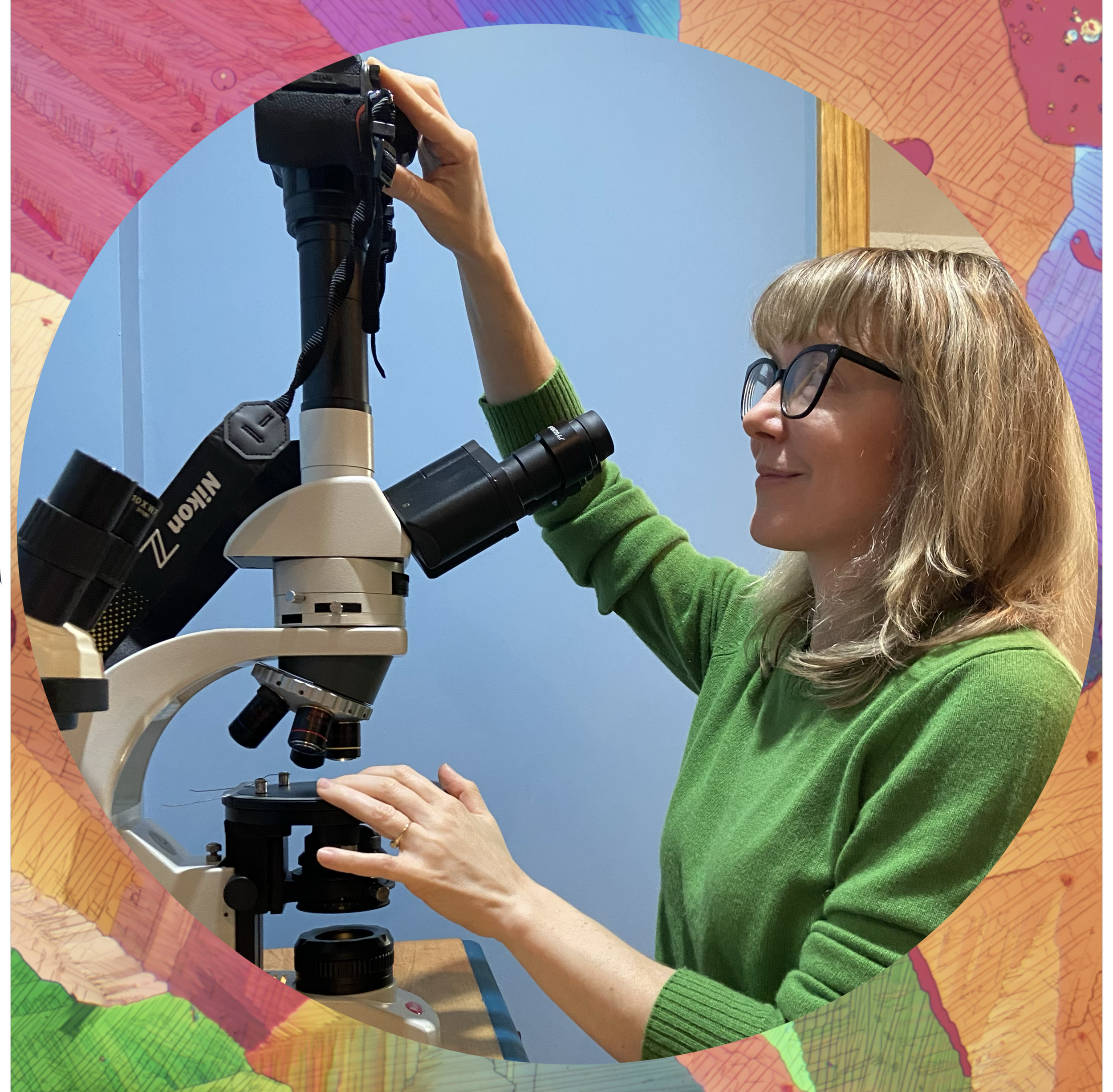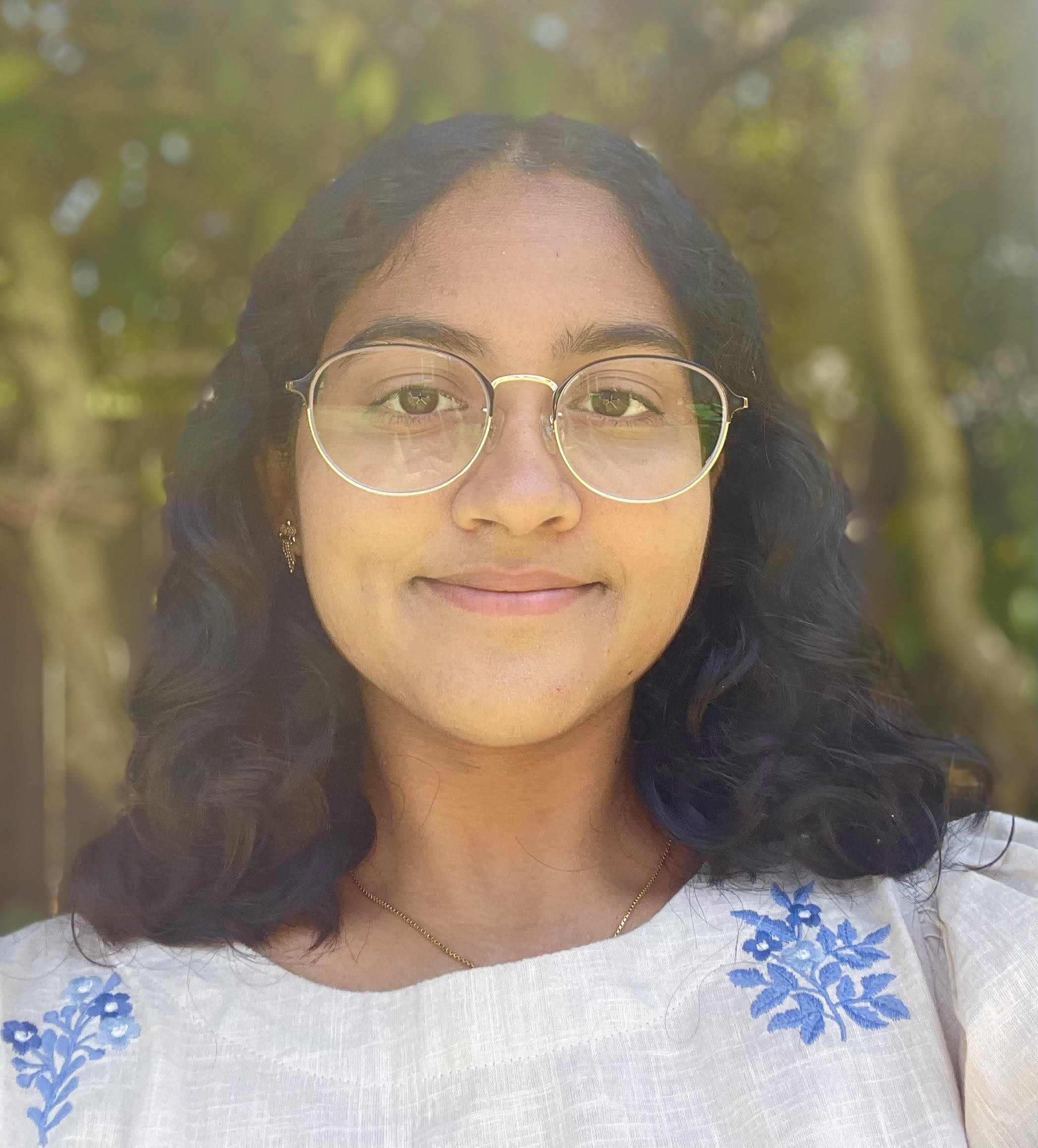
The Interdisciplinary Microbiology Fellows and MICRO Internship Programs.
There are people who fearlessly cross boundaries.
They are microbiologists AND artists, science communicators AND researchers, writers AND photographers. This is a home for these people and the microbe-related projects they create. This is a fellowship program for those who specialize in being generalists, but who are universally dedicated to making a difference.

Meet the Fellows
Project: Made with Microbes.
Tracy Debenport (she/her)—a former fellow and current Creative Producer for The Microbe Institute—is a research mycologist, science communicator, and award-winning artist. Well-known as the scientist and photographer behind the popular “Under.The.Scope” instagram account, she blends her artistic expertise with mycology acumen to whimsically bring to life an art and education project that reveals the beauty and utility of the molecules made by microbes.
Project Media: Graphic design, photography Open-access Contribution: An art and activity book leveraging these images, and corresponding information, to help meet microbial application learning outcomes.
Topics: Microbial Art & Education
Project: Sew Curious.
Kristina Skillin (she/her) is an artist, archeologist, and historian who traces the human narrative to connect historical practices to the development of technologies and products throughout humanity’s history. As a professionally trained artist and scientist she engages diverse audiences through the creation of art and adornment, microscopy-based research, and by co-founding the Museum of Beadwork one goal of which is to show the connection and interconnection of peoples through the common human practice of ornamentation and design. Her project communicates the relevance of microbes through fashion, using photomicroscopy images to create utilitarian fashion accessories.
Media: Cloth, Photomicroscopy Open-Source Contribution: TBD
Topics: Microbial Art & Communication
Project: Interbiota.
Sam Ruk (she/her) is a 17-year-old student from California, USA, who is dedicated to making science accessible to broader communities. Her career aspirations include conducting future research on sustainable agriculture practices to solve the world’s food system challenges. Her project—the science education website “Interbiota” is an educational website with the intention of broadening the audience’s view of the microbial world. Microbiology is full of stories with fascinating microbial characters–microbes that light up the ocean, conduct trade deals with plants, make homes in our belly button, and much more. Through colorful design, playful illustrations, and accessible language, Interbiota aims to showcase these microbial stories in an engaging way.
Media: Graphic design, science journalism Open-access Contribution: Public website
Topics: Microbial Art & Education & Communication

The Fellowship Program.
The Microbe Institute Fellowship program supports individuals in pursuing short (typically < 6 month) interdisciplinary projects related to microbes. The projects are joint creations between the institute and the fellow. All material created by the fellow is owned by the fellow, but can be showcased and shared by The Microbe Institute. In return for project and personal development plans, it is required that all fellows create an aspect of their project that increases the accessibility of microbiology for broader audiences. This is often in the form of creating an open-source protocol. While the fellowship program does not currently offer financial support, The Institute works with the fellow to obtain external funding on an as-needed basis.
The MICRO Internship Program.
The Microbe Institute provides MICRO internships as sprint-style STEM (Science, Technology, Engineering, and Math) research, communication, and education internships. They are designed to be of particularly short duration (weeks, rather than months) and feature work on one mission-aligned project headed by The Microbe Institute.
Meet the MICRO Interns
Maymuna Galbert
Age: 18, Country of Primary Residence: Morocco, Pronouns: she/her, MICRO Intern year: 2023
In the summer and fall of 2023, Maymuna assisted members of The Microbe Institute with our project finding environmental microbes as sources of novel dyes for the carpet weaving community of Morocco. Maymuna helped with field research, and recording education material. She co-translated our open-source dye protocol and information book—created with members of the ATW80Fabrics team—into Arabic.
When asked what this project means to her, Maymuna responded, “This project symbolized collaboration, expanding my knowledge into previously unexplored territories, and connecting with an amazing group of inspiring women.”
Alima Galbert
Age: 16, Country of Primary Residence: Morocco, Pronouns: she/her, MICRO Intern year: 2023
In the summer and fall of 2023, Alima also assisted members of The Microbe Institute with our project finding environmental microbes as sources of novel dyes for the carpet weaving community of Morocco. Maymuna helped with field research, and recording education material. She co-translated our open-source dye protocol and information book—created with members of the ATW80Fabrics team—into Arabic.
When asked what this project means to her, Alima responded, “Over the course of this project, I have met so many wonderful and knowledgeable people, and I am incredibly lucky to have been a part of this group. To have been surrounded by women who do so many different but incredible things reminded me that there are so many possibilities for me in the future. This project [field component] may have only lasted 8 days but the impact it had will stay with me for countless years. The project, along with the people involved will forever hold a dear place in my heart.”





